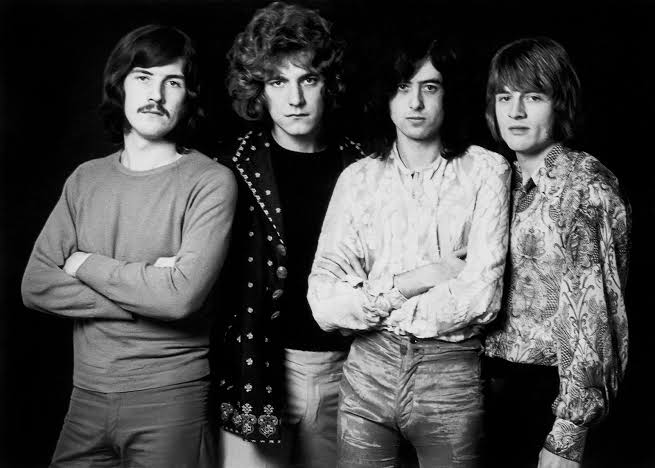
The story of Led Zeppelin’s inception is a compelling tale of musical ambition, serendipitous encounters, and the fiery desire to forge a new sound in the late 1960s rock scene. It all began with the implosion of another iconic British band: The Yardbirds.
By 1968, The Yardbirds, despite boasting guitar legends like Eric Clapton and Jeff Beck in their past, were a band on its last legs. Guitarist Jimmy Page, a seasoned session musician who had joined the group in its final phase, found himself tasked with fulfilling remaining tour dates after the departure of other members. Initially, Page envisioned a “supergroup” featuring Jeff Beck and members of The Who, but this ambitious project never fully materialized.
However, fate had other plans. Page needed a new lineup, and his first crucial recruit was vocalist Robert Plant. Page had been impressed by Plant’s powerful vocals and charismatic stage presence while Plant fronted a band called Band of Joy. Plant, in turn, recommended his former Band of Joy drummer, the thunderous John Bonham. Bonham, initially hesitant, was eventually persuaded to join this new venture.
The final piece of the puzzle fell into place with bassist and keyboardist John Paul Jones. Jones, like Page, was a highly respected and versatile session musician with a keen interest in exploring heavier musical territories. He had previously worked with Page and, sensing a unique chemistry, expressed his desire to be part of Page’s new project.
In August 1968, the four musicians met for the first time in a small room beneath a record store in Gerrard Street, London. The chemistry was immediate and electrifying. They jammed together, notably tearing through a rendition of “Train Kept A-Rollin’,” a song previously covered by The Yardbirds. This initial session solidified the feeling that something special was brewing.
Initially, the newly formed band toured Scandinavia under the moniker “The New Yardbirds” to fulfill the existing contractual obligations. However, they quickly realized they were forging a sound entirely their own, distinct from their predecessor. A new name was needed, one that reflected their burgeoning power and ambition.
The now-legendary name “Led Zeppelin” emerged from a casual, almost humorous conversation among musicians. The Who’s drummer, Keith Moon, and bassist John Entwistle reportedly joked that the band would go down like a “lead balloon.” Page, seizing on the imagery and impact of the phrase, suggested dropping the “a” in “lead” to avoid mispronunciation.
With their name secured, Led Zeppelin, as they were now officially known, quickly signed a lucrative deal with Atlantic Records, granting them significant artistic freedom. Their self-titled debut album, recorded in a mere 36 hours, was unleashed upon the world in 1969. It was a raw, blues-infused hard rock explosion that defied easy categorization and immediately established them as a force to be reckoned with.
From the ashes of The Yardbirds, a musical titan had risen. Led Zeppelin’s formation wasn’t just a matter of finding four talented musicians; it was a confluence of vision, chemistry, and a shared desire to push the boundaries of rock music. Their explosive start laid the foundation for a decade of unparalleled success and cemented their place as one of the most influential and iconic bands in history.
Be the first to comment